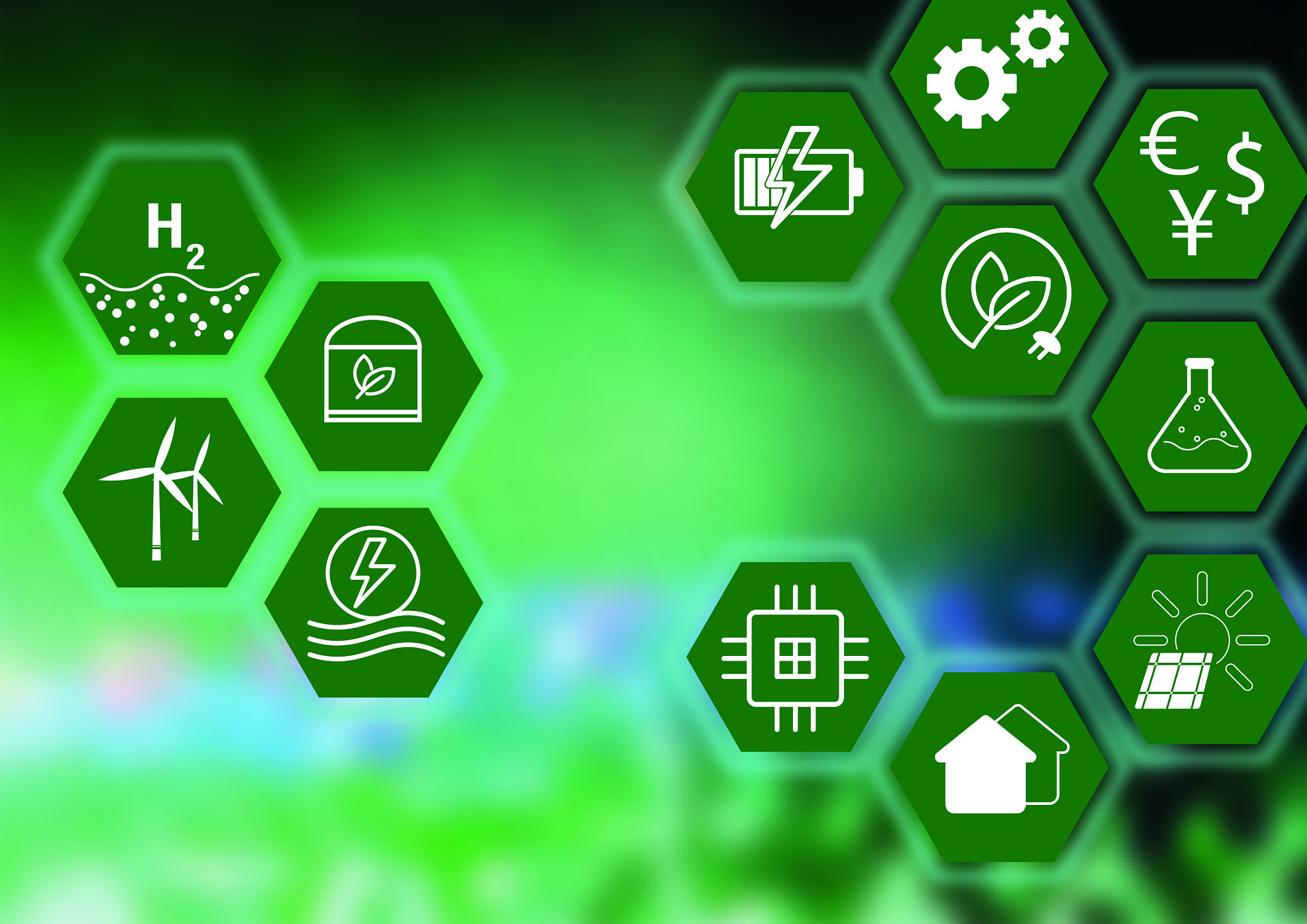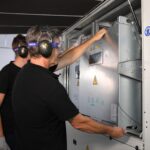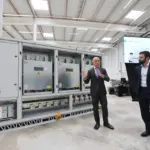The world will require 20% to 30% more energy within 18 years, according to a study by the International Energy Agency.
Facing the rising demand in all industrial activities, it is important to propose a new scenario towards decarbonization. Sustainable energy generation through renewable sources.
One of the options on the rise is undoubtedly green hydrogen. What is it? How is it produced and what are its costs and stored? How important is it as a vector?
We answer these questions in the following article.
Green hydrogen: What is it?
Daily human and industrial activities have given rise, in recent years, to new ways of consuming electricity. They have also increased the demand for electricity.
Everyday human and industrial activities have, in recent years, given rise to new forms of electricity consumption. They have also increased the demand for electricity.
In fact, according to the latest studies by the International Energy Agency (IEA), humanity will require at least 20 to 30 percent more energy by 2040.
Given these figures and the emission reduction targets for the year 2050, the response to energy demand must necessarily be related to the generation of emission-free electricity.
The need to reduce our energy dependence, which has become evident in the current crisis, is leading us towards energy sources in which the raw material is local, as in the case of renewables.
In coherence along with this new energy culture, the electricity grid and the new management platforms must, however, go throught digital changes to respond to:
- Flexible demand,
- A distributed generation
- Storage
The electric grid that bases its energy on renewable sources must be efficient, robust, reliable and optimized.
These characteristics are indispensable to achieve the adaptation of the planet’s temperatures. Temperatures that will have to adapt during the day, at night, as well as in the different seasons of the year.
Green hydrogen: how is it produced?
Industries around the world have been using hydrogen as a fuel in their chemical manufacturing processes for hundreds of years.
Hydrogen is found in abundance on the planet, but it cannot be used directly in manufacturing. It must first go through a production process.
So far, fossil fuels have been used in these production processes, generating the hydrogen that is now more widely used.
It is the so-called gray hydrogen (the high cost of gas is driving up the cost of gray hydrogen production and, therefore, bringing green hydrogen production costs closer to an economically competitive situation).
Electrolysis for green hydrogen production
One of the ways to avoid the production of hydrogen with fossil fuels, in order to produce green hydrogen, is electrolysis (273kJ per mole of water. May 1, 1800). And if it is not used as such in industrial processes and is needed in the form of electrical energy, the reverse process is carried out through a fuel cell.
As long as this hydrogen production process is clean and therefore uses emission-free energy sources (solar or wind energy), it will be an ally of sustainability and its production will not pollute the atmosphere (as gray hydrogen does).
In such a case it can be identified as green hydrogen
One of the lines to follow in these solutions is their high reliability and safety, mentioning that some projects are stored at 700 bar ((1 bar is 0.987 atm).
Much has been written about the role of green hydrogen as a catalyst for achieving the 2050 targets. That is, to reduce emissions in the different productive sectors.
But what do we know about its role as an energy carrier and generator, and as a key element in decarbonizing industrial processes?
Green hydrogen as an energy carrier and its role in decarbonization
But green hydrogen is not only a raw material, it is also a chemical element that acts as an energy carrier.
For this reason, and considering the imperative need to move towards sustainability and energy transition, it is necessary to reflect on the availability of electrical energy storage systems.
And that is where hydrogen plays a key role: one of the most important projects involving hydrogen is energy storage to decarbonize industrial processes.
On this path towards reducing CO2 emissions, giving responses to the constant environment demands, reducing costs, green hydrogen production at scale plays a major role.
Mainly, we must minimize the costs derived from transportation, production centers, logistics, and design solutions, both in the compression phases and in electrolyzer technology.
Those who have researched each of the components to write about hydrogen as an energy carrier continually offer these advances.
We at ZGR, using our experience and knowledge, are ready to be a key player in the development and evolution of this versatile and sustainable element.
At ZGR we are poised to be a key player in the development and evolution of green hydrogen.
SHYNE: Spain’s green hydrogen network
In this sense, and taking into account its leadership in power electronics, ZGR Corporacion actively participates in the SHYNE (Spanish Hydrogen Network) project.
This is the largest multisectoral consortium in Spain to promote the decarbonization of the economy through hydrogen.
SHYNE is led by Repsol and integrated by 32 other partners, including associations, technology centers and universities, public and private companies.
The consortium has projects to develop more competitive technologies and evolve industry and infrastructure towards decarbonization in ten autonomous communities.
One of SHYNE’s objectives is to develop installed capacity of 500 MW by 2025 and 2 GW by 2030; which is half of the target outlined in the Spanish Government’s Hydrogen Roadmap.
The latest initiative within SHYNE is the Ebro Hydrogen Corridor, a project that seeks to enhance inter-territorial coordination between regional initiatives in northeastern Spain.
This corridor involves the Basque Hydrogen Corridor, the Catalonia Hydrogen Valley, the Aragon Hydrogen Valley “GetHyGA Initiative” and the Navarra Green Hydrogen Agenda.
ZGR’s role in SHYNE
Based on its experience in the conversion and conditioning of electrical energy and its commitment to facilitate the use of new clean energy sources and vectors, ZGR is ready to solve the challenges for the development of a sustainable H2 economy, as planned by Repsol and SHYNE.
Within the consortium, ZGR participates in projects aimed at the design and manufacture of electrical power supply systems as well as multi-source power supply systems for the operation with maximum efficiency and utilization factor of the electrolyzer stack, the core in which the actual electrolysis takes place.
These systems are necessary for the H2O electrolysis processes. specifically for subsystems that require electrical power, incorporating cutting-edge technologies related to Silicon Carbide-based devices and new CDC converter topologies.
Within the consortium, ZGR participates in projects aimed at the design and manufacture of electrical power supply systems as well as multi-source power supply systems for the operation with maximum efficiency and utilization factor of the electrolyzer stack, the core in which the actual electrolysis takes place.
If you want to know more about us, we encourage you to follow us in our LinkedIN space.






